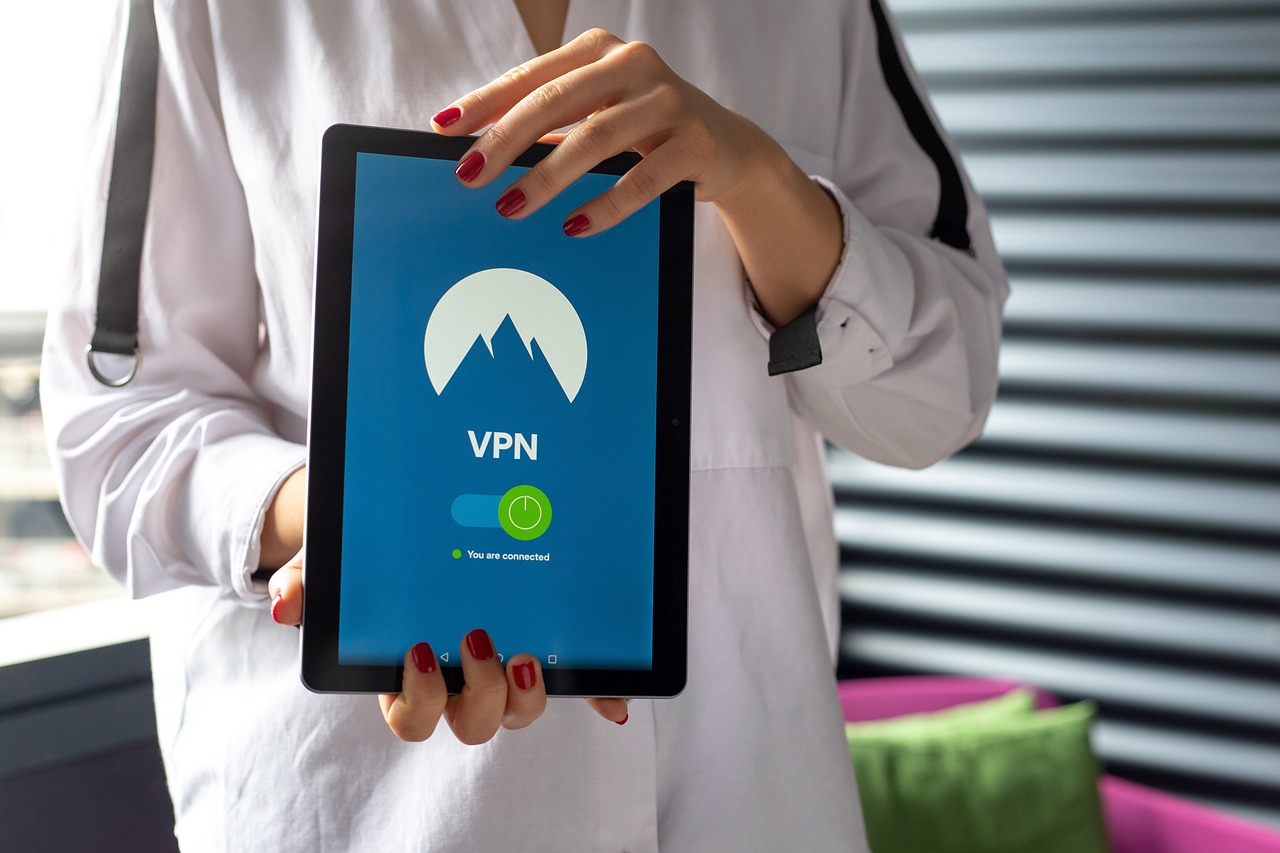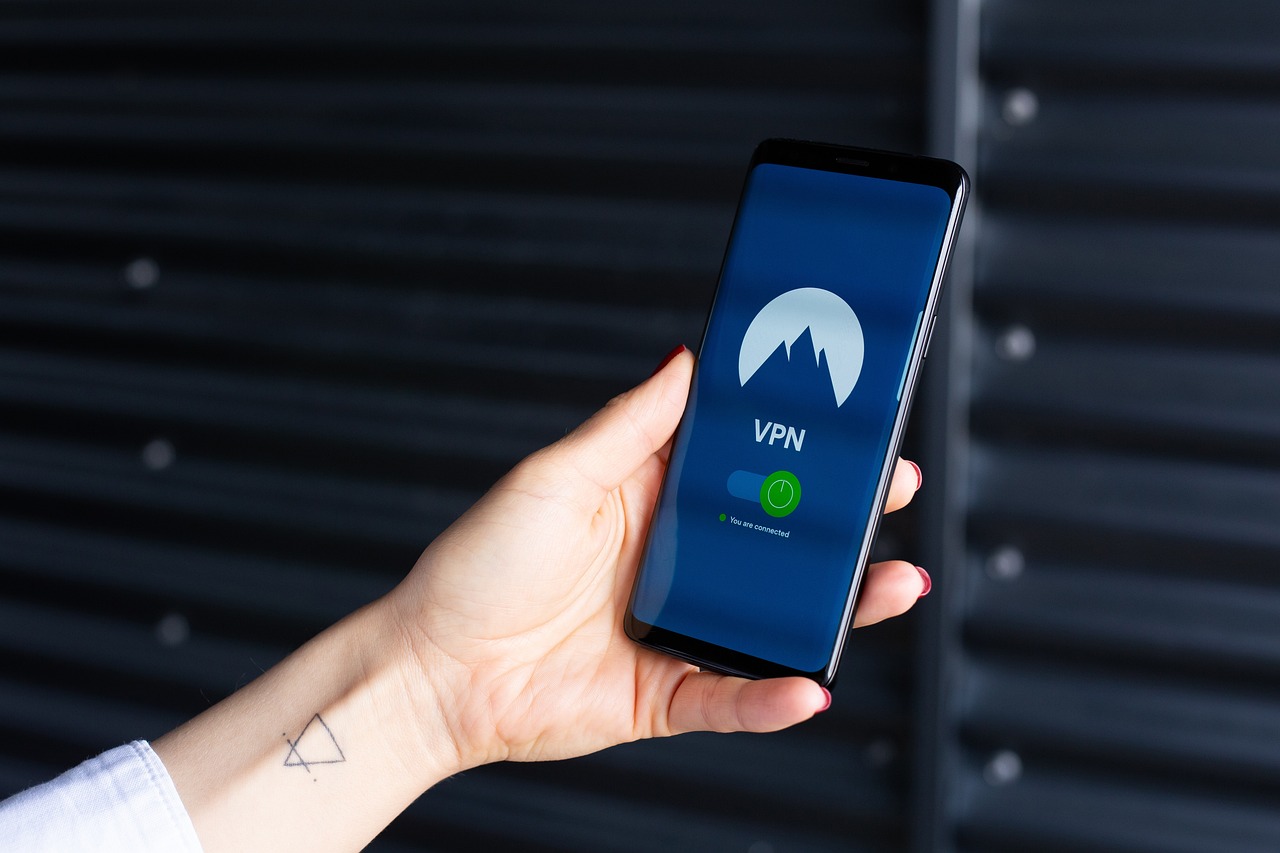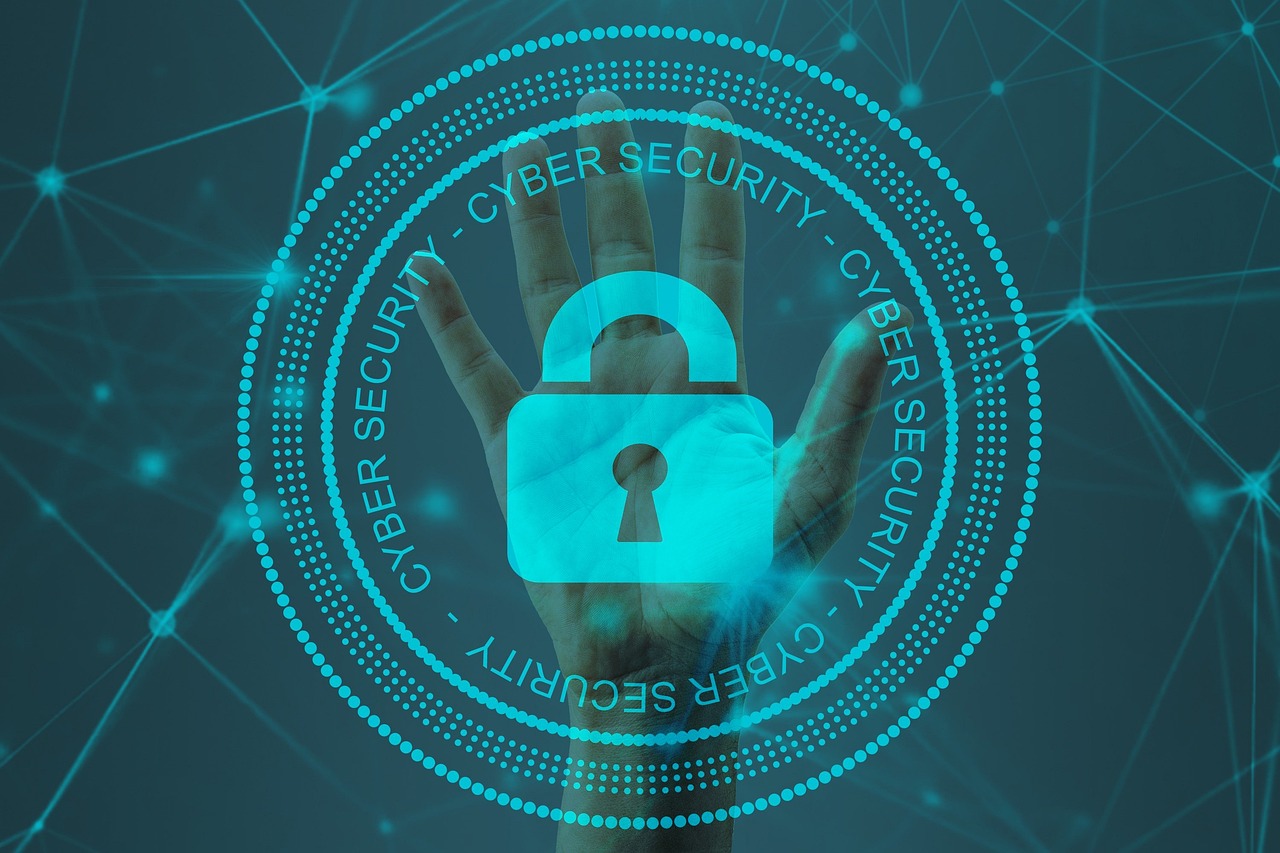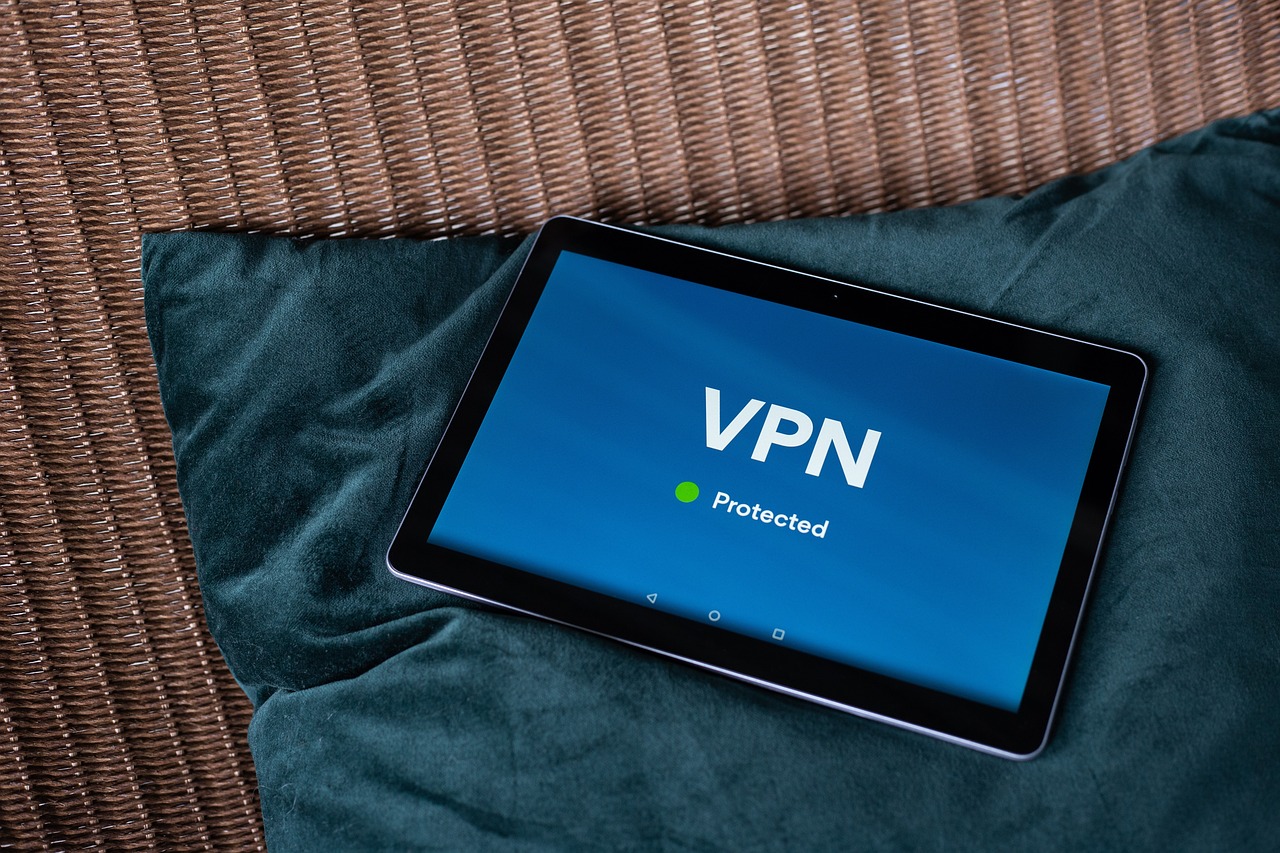The Impact of Cyber Attacks on Governments
In today's digital age, the threat of cyber attacks looms larger than ever, posing significant challenges to governments around the globe. These attacks are not just about stealing data; they can disrupt essential services, compromise national security, and erode public trust in government institutions. Imagine waking up one day to find that the power grid has been hacked, leading to widespread outages, or that sensitive government documents have been leaked online. The implications of such scenarios are staggering, and they underline the urgent need for robust cybersecurity measures.
Cyber attacks can take many forms, from sophisticated malware to simple phishing schemes. Each type of attack carries its own risks and consequences, making it critical for governments to understand the landscape of cyber threats. For instance, a successful ransomware attack could lock down vital data, crippling government operations until a ransom is paid. On the other hand, phishing attempts can exploit human vulnerabilities, tricking employees into revealing sensitive information. The human element, in fact, is often the weakest link in cybersecurity, which is why training and awareness are paramount.
Moreover, the impact of cyber attacks extends beyond immediate damage. They can undermine public confidence in government capabilities. When citizens hear about a data breach or a critical infrastructure attack, their trust erodes. They begin to question whether their personal information is safe and whether their government can protect them. Rebuilding this trust requires transparency, accountability, and a commitment to enhancing cybersecurity measures.
In response to these threats, governments are increasingly investing in advanced technologies and forming partnerships with private sector organizations. This collaborative approach is essential for sharing intelligence and developing effective defense strategies. By leveraging cutting-edge technologies like artificial intelligence and machine learning, governments can improve their ability to detect and respond to cyber threats swiftly.
As we look towards the future, it's clear that the landscape of cybersecurity will continue to evolve. Emerging technologies, such as the Internet of Things (IoT) and 5G networks, bring new vulnerabilities that governments must address. A proactive approach, involving continuous adaptation and fostering a culture of cybersecurity awareness, will be crucial in preparing for an increasingly complex cyber threat environment.
- What are the most common types of cyber attacks against governments?
Governments commonly face phishing, ransomware, and Distributed Denial-of-Service (DDoS) attacks. Each type poses unique challenges and requires tailored responses. - How can governments protect themselves from cyber threats?
By investing in advanced cybersecurity technologies, conducting regular training for employees, and fostering collaboration with private sectors, governments can enhance their defenses. - What is the impact of cyber attacks on public trust?
Cyber incidents can severely diminish public trust in government institutions, leading to skepticism about their ability to protect citizens' data and maintain national security.

Understanding Cyber Attacks
Cyber attacks are not just a buzzword; they represent a real and pressing threat to government operations around the globe. These malicious attempts to breach government systems can lead to devastating consequences, including data breaches, service disruptions, and the exposure of sensitive information. To put it simply, a cyber attack is like an uninvited guest breaking into your home, rummaging through your belongings, and stealing your most valuable possessions. This makes understanding the nature of these attacks crucial for developing effective defense strategies.
The landscape of cyber threats is constantly evolving, and governments must stay one step ahead of cybercriminals. Cyber attacks can take many forms, but they all share a common goal: to exploit vulnerabilities within government systems. By understanding the different types of cyber attacks and their implications, governments can better prepare themselves to defend against these threats.
One of the most alarming aspects of cyber attacks is their ability to disrupt essential services. Imagine a hacker launching an attack on a city's power grid, causing widespread blackouts and chaos. The ripple effects can be catastrophic, affecting everything from emergency services to daily life. This is why governments must prioritize cybersecurity measures to safeguard national interests.
Moreover, the psychological impact of cyber attacks cannot be overlooked. When citizens hear about a government data breach, it raises questions about the safety of their personal information and the overall security of the nation. This erosion of trust can lead to skepticism about government institutions, making it imperative for authorities to communicate effectively about their cybersecurity efforts.
In summary, understanding cyber attacks is a multifaceted endeavor that involves recognizing the various tactics employed by cybercriminals, the potential consequences of these attacks, and the critical need for robust cybersecurity measures. As we delve deeper into the types of cyber attacks that governments face, it becomes evident that a proactive approach is essential for mitigating risks and protecting national security.
- What are the most common types of cyber attacks on governments? Governments frequently face phishing, ransomware, and DDoS attacks.
- How do cyber attacks affect public trust? Cyber incidents can lead to skepticism about the government's ability to safeguard citizens' data and maintain national security.
- What measures can governments take to prevent cyber attacks? Investing in technology, employee training, and collaboration with the private sector are key strategies.
- Why is understanding cyber attacks important? It helps governments develop effective defense strategies and maintain public trust.

Types of Cyber Attacks
In today's digital age, governments are not just guardians of public safety; they are also prime targets for a variety of cyber attacks. These malicious attempts to breach government systems can come in many forms, each with its own unique implications and potential consequences. Understanding the different types of cyber attacks is crucial for developing effective defense strategies and ensuring the security of national interests. Let's delve into some of the most prevalent types of cyber threats that governments face today.
One of the most common forms of cyber attack is phishing. This deceptive tactic involves sending emails or messages that appear to be from legitimate sources, tricking government employees into revealing sensitive information. Phishing attacks exploit human vulnerabilities, making it essential to raise awareness and provide training to prevent these incidents. For instance, a government employee might receive an email that looks like it’s from their IT department, asking them to verify their password. If they fall for this trap, the attacker gains access to critical systems.
Another significant threat is ransomware. This type of attack encrypts government data, effectively locking it away until a ransom is paid. Ransomware can cripple essential services, disrupt operations, and cause severe financial strain. Imagine a city government unable to access its emergency response systems due to a ransomware attack; the potential consequences could be catastrophic. Therefore, having strong data backup and recovery plans is not just advisable; it's imperative for safeguarding public services.
Additionally, governments must be wary of Distributed Denial-of-Service (DDoS) attacks. These attacks overwhelm a system with traffic, rendering it inoperable. For example, a DDoS attack on a government website can prevent citizens from accessing crucial information or services, leading to frustration and distrust. The implications of such disruptions extend beyond immediate inconvenience; they can erode public confidence in government institutions.
To better understand these types of cyber attacks, consider the following table that outlines their characteristics and potential impacts:
| Type of Attack | Description | Potential Impact |
|---|---|---|
| Phishing | Deceptive emails or messages tricking users into revealing sensitive information. | Data breaches, financial losses, compromised security. |
| Ransomware | Malware that encrypts data, demanding payment for decryption. | Service disruptions, financial strain, operational paralysis. |
| DDoS | Overwhelming a system with traffic to render it inoperable. | Inaccessibility of services, erosion of public trust. |
In summary, the landscape of cyber threats is vast and ever-evolving. Governments must stay vigilant and proactive in their defense strategies. By understanding the various types of cyber attacks—such as phishing, ransomware, and DDoS attacks—they can better prepare and implement effective measures to protect their systems and maintain public trust.
Q: What is the most common type of cyber attack against governments?
A: Phishing attacks are among the most common, as they exploit human vulnerabilities and can lead to significant data breaches.
Q: How can governments protect themselves from ransomware?
A: Governments can protect themselves by implementing strong data backup and recovery plans, alongside regular employee training on cybersecurity awareness.
Q: What should be done immediately after a cyber attack?
A: It’s crucial to assess the damage, contain the breach, and notify relevant authorities. Following that, a thorough investigation should be conducted to prevent future incidents.

Phishing Attacks
Phishing attacks are like the wolves in sheep's clothing of the digital world. They involve deceptive emails or messages that appear to come from legitimate sources, tricking unsuspecting government employees into revealing sensitive information. Imagine receiving an email that looks just like it’s from your boss, asking you to click a link to view an important document. It seems harmless, right? But that link could lead to malicious software or a fake website designed to harvest your credentials. The alarming reality is that these attacks exploit human vulnerabilities, relying on social engineering tactics that prey on trust and urgency.
To combat phishing, awareness and training are essential. Government agencies must implement comprehensive training programs that educate employees on how to recognize phishing attempts. These programs should cover the characteristics of phishing emails, such as:
- Suspicious sender addresses: Often, the email may seem to come from a trusted source, but a closer look at the email address can reveal inconsistencies.
- Urgent language: Phishing emails often create a sense of urgency, prompting immediate action without critical thinking.
- Generic greetings: Legitimate organizations typically personalize their communications, while phishing attempts often use vague greetings like "Dear Customer."
Recognizing these signs can significantly reduce the risk of falling victim to such attacks. However, the consequences of successful phishing can be severe. When attackers gain access to sensitive information, the fallout can be catastrophic. Imagine a scenario where confidential data is leaked, leading to financial losses, compromised national security, and a breach of public trust. The ripple effects can be damaging, as citizens become wary of their government’s ability to protect their information.
In summary, phishing attacks are a persistent threat that requires constant vigilance. Governments must prioritize training and awareness to safeguard their operations and the sensitive data they handle. By fostering a culture of cybersecurity awareness and encouraging employees to question suspicious communications, we can build a stronger defense against these insidious attacks.

Recognizing Phishing Attempts
In today's digital age, cybercriminals are becoming increasingly sophisticated in their tactics, making it essential for government employees to be able to recognize phishing attempts. Phishing is not just a buzzword; it's a real threat that can have devastating consequences if not addressed swiftly. So, how can we identify these deceptive practices? First, we need to look for certain red flags that can indicate a phishing attempt. For example, emails that contain urgent requests for sensitive information or those that come from unknown or suspicious sources should raise immediate concerns.
Moreover, phishing attempts often employ social engineering tactics, preying on our emotions or sense of urgency. They might use phrases like "Your account will be suspended unless you act now!" or "Verify your identity to avoid penalties!". Recognizing these tactics is crucial. Employees should be trained to scrutinize not just the content but also the sender's email address, as many phishing emails come from addresses that mimic legitimate organizations but contain slight variations.
To further aid in recognizing phishing attempts, here are some common characteristics to watch out for:
- Generic Greetings: Phishing emails often use generic salutations like "Dear Customer" instead of personalizing the message.
- Suspicious Links: Hovering over links in an email can reveal their true destination. If the URL looks odd or doesn’t match the official website, it's likely a phishing attempt.
- Spelling and Grammar Errors: Many phishing attempts come from non-native speakers, resulting in awkward phrasing or grammatical mistakes.
It's important to foster a culture of vigilance within government institutions. Regular training sessions and workshops can help employees stay informed about the latest phishing tactics and how to respond to suspicious communications. Additionally, implementing reporting mechanisms for suspected phishing attempts can further enhance security measures. By empowering employees with the knowledge and tools to recognize phishing attempts, we can significantly reduce the risk of security breaches and protect sensitive information.
Q1: What should I do if I suspect a phishing email?
A1: If you suspect a phishing email, do not click on any links or download attachments. Report it to your IT department or follow your organization's reporting protocol.
Q2: Can phishing attacks happen through text messages?
A2: Yes, phishing can occur through SMS as well, commonly referred to as "smishing." Always verify the source before responding or clicking on links.
Q3: How can I educate my team about phishing?
A3: Organize training sessions, share resources on identifying phishing attempts, and conduct simulated phishing exercises to enhance awareness.

Consequences of Successful Phishing
Successful phishing attacks can have devastating consequences for government operations, affecting not only the immediate victims but also the broader public and national security. When attackers gain access to sensitive information, the fallout can be extensive. For instance, a compromised email account may lead to unauthorized access to classified documents, resulting in a breach of national security protocols. This isn't just a theoretical concern; there have been real-world incidents where phishing led to significant data leaks.
Moreover, the financial implications of successful phishing attacks can be staggering. Governments may incur costs related to incident response, forensic investigations, and even legal liabilities. The recovery process can drain resources, diverting funds from essential services and programs. In fact, a study by cybersecurity firms indicated that the average cost of a data breach can reach into the millions, a burden that taxpayers ultimately bear.
In addition to financial losses, successful phishing can erode public trust in government institutions. Citizens expect their governments to protect their personal information and maintain security. When a phishing attack successfully compromises sensitive data, it raises questions about the government's ability to safeguard its citizens. This skepticism can lead to a decline in public confidence, making it challenging for governments to effectively communicate and engage with the populace.
To illustrate the potential consequences of successful phishing, consider the following table:
| Consequence | Description |
|---|---|
| Data Breaches | Unauthorized access to sensitive information, leading to potential misuse. |
| Financial Loss | Costs associated with incident response, investigations, and legal actions. |
| Public Trust Erosion | Loss of confidence in government institutions and their ability to protect data. |
| Operational Disruption | Interruption of essential services due to compromised systems. |
In summary, the consequences of successful phishing attacks are multifaceted, impacting not just the immediate victims but the entire framework of government operations. This underscores the vital importance of implementing robust cybersecurity measures and fostering a culture of awareness among employees to mitigate these risks.
- What is phishing? Phishing is a cyber attack that uses deceptive emails or messages to trick individuals into revealing sensitive information.
- How can I recognize a phishing attempt? Look for suspicious links, unexpected attachments, and poor grammar or spelling in messages.
- What should I do if I suspect a phishing attack? Report the incident to your IT department immediately and avoid clicking on any links or providing personal information.
- Can phishing attacks be prevented? Yes, through employee training, awareness programs, and implementing advanced security measures.

Ransomware Threats
Ransomware attacks have emerged as one of the most alarming threats to government operations in recent years. These malicious attacks involve encrypting critical data within government systems, effectively locking it away from authorized users until a ransom is paid. Imagine waking up to find that all your important files, from sensitive citizen data to crucial operational documents, are suddenly inaccessible. This scenario is not just a nightmare; it is a reality that many governments have faced.
The impact of ransomware extends far beyond the immediate financial implications. When government services are disrupted, it can lead to a cascade of consequences that affect public safety and national security. For instance, if a ransomware attack targets emergency services, it could delay response times during critical situations, putting lives at risk. Furthermore, the damage to public trust can be profound, as citizens expect their government to protect their information and ensure the continuity of essential services.
To illustrate the severity of ransomware threats, consider the following statistics:
| Year | Number of Ransomware Attacks on Governments | Average Ransom Paid (USD) |
|---|---|---|
| 2019 | 50 | $50,000 |
| 2020 | 100 | $200,000 |
| 2021 | 200 | $300,000 |
As shown in the table, the number of ransomware attacks on government entities has doubled over the years, with the ransom amounts also significantly increasing. This trend highlights the urgent need for governments to bolster their cybersecurity defenses. A proactive approach is essential, one that includes not only advanced technology but also robust data backup and recovery plans. By regularly backing up data and ensuring that these backups are secure and easily accessible, governments can mitigate the impact of ransomware attacks. This means that even if data is locked, recovery is possible without succumbing to the attackers' demands.
Moreover, employee training is vital in preventing ransomware incidents. Many attacks start with phishing emails that trick employees into downloading malicious software. By fostering a culture of cybersecurity awareness, governments can empower their workforce to recognize potential threats and act accordingly. Regular training sessions, simulated phishing attacks, and clear communication about the importance of cybersecurity can make a significant difference in reducing vulnerability.
In conclusion, ransomware threats pose a serious challenge to government operations, with the potential for widespread disruption and loss of public trust. However, by investing in technology, implementing strong data management practices, and prioritizing employee training, governments can create a more resilient defense against these insidious attacks. The stakes are high, and the time to act is now.
- What is ransomware? Ransomware is a type of malicious software that encrypts files on a victim's computer, demanding payment for the decryption key.
- How can governments protect against ransomware? Governments can protect against ransomware by implementing strong data backup protocols, investing in cybersecurity technology, and conducting regular employee training.
- What should a government do if it is attacked by ransomware? If attacked, a government should isolate affected systems, assess the damage, and consult cybersecurity experts while considering whether to pay the ransom or restore from backups.

Impact on National Security
Cyber attacks have become a significant threat to national security, impacting everything from sensitive data to critical infrastructure. When government systems are breached, the ramifications can be dire, leading to the exposure of classified information, disruption of essential services, and even threats to public safety. Imagine a scenario where a cyber criminal gains access to a country's power grid—this could result in widespread blackouts, chaos, and panic among citizens. The implications of such attacks are not just theoretical; they are very real and can have devastating effects.
One of the most alarming aspects of cyber attacks is their ability to target critical infrastructure. This includes systems that support vital services such as electricity, water supply, and transportation. If these systems are compromised, the effects can ripple throughout society, potentially endangering lives. For instance, a successful cyber attack on a transportation system could lead to catastrophic accidents or delays, disrupting the movement of emergency services. Therefore, protecting these systems is not just a matter of cybersecurity; it's a matter of national security.
Furthermore, the erosion of public trust in government institutions is another significant consequence of cyber attacks. When citizens learn that their personal data has been compromised or that their government is unable to protect critical infrastructure, their confidence in leadership diminishes. This skepticism can lead to a lack of cooperation with government initiatives, making it even harder to implement effective security measures. Rebuilding this trust requires transparency, accountability, and a commitment to improving cybersecurity practices.
To illustrate the potential impact of cyber attacks on national security, consider the following table:
| Type of Cyber Attack | Potential Impact |
|---|---|
| Data Breach | Exposure of sensitive information, loss of public trust |
| Ransomware | Disruption of services, financial losses |
| DDoS Attack | Service outages, impact on emergency response |
| Phishing | Unauthorized access to systems, data theft |
In conclusion, the impact of cyber attacks on national security is profound and multifaceted. Governments must prioritize cybersecurity measures to protect sensitive information and critical infrastructure. As threats continue to evolve, it is essential for public institutions to adapt, ensuring that they can effectively safeguard national interests while maintaining the trust of their citizens.
- What are the main types of cyber attacks that governments face? Governments typically face phishing, ransomware, DDoS attacks, and data breaches, each posing unique challenges.
- How do cyber attacks affect public trust? When citizens see that their data is not secure, or that critical services are compromised, their confidence in government institutions can diminish.
- What steps can governments take to enhance cybersecurity? Investing in advanced technologies, collaborating with the private sector, and implementing robust training programs are essential steps.
- What role does critical infrastructure play in national security? Critical infrastructure supports vital services; its protection is paramount to ensure public safety and national stability.

Threats to Critical Infrastructure
In today's digital age, the are more pronounced than ever. Cyber attacks targeting essential services such as power grids, water supply systems, and transportation networks can have catastrophic consequences. Imagine waking up one morning to find that your electricity is out, not just in your home but across an entire city. This scenario is not just a scene from a dystopian movie; it is a real possibility that governments must prepare for.
Critical infrastructure is the backbone of society, and its disruption can lead to chaos. For instance, a successful cyber attack on a power grid could result in widespread blackouts, impacting hospitals, schools, and emergency services. The ripple effect of such an incident can extend far beyond the immediate area, affecting economic stability and public safety. Therefore, governments must prioritize the protection of these vital systems.
To better understand the potential threats, consider the following types of attacks that can target critical infrastructure:
- Denial of Service (DoS) Attacks: These attacks overwhelm systems with traffic, rendering them inoperable. If a transportation system's scheduling software is taken down, it could lead to massive delays and safety risks.
- Data Manipulation: Hackers can infiltrate systems and alter data, leading to incorrect information being used in critical decision-making processes. For example, changing the readings from a water treatment facility could compromise public health.
- Physical Damage: Some cyber attacks can lead to physical damage to infrastructure, such as tampering with the controls of a dam or power plant, potentially causing catastrophic failures.
Given these threats, the importance of a robust cybersecurity strategy cannot be overstated. Governments must not only invest in advanced technologies but also engage in regular risk assessments and drills to prepare for potential breaches. Collaboration with private sector experts can provide insights into the latest threats and the best practices for countering them.
Furthermore, public awareness plays a crucial role in safeguarding critical infrastructure. When citizens are informed about the potential threats and the importance of reporting suspicious activities, it creates a collective defense against cyber attacks. Just like a neighborhood watch program, community vigilance can help protect vital services from malicious actors.
- What is critical infrastructure?
Critical infrastructure refers to essential systems and assets that are vital for the functioning of a society, including power grids, water supply, transportation, and communication networks. - Why are cyber attacks on critical infrastructure a concern?
Cyber attacks on critical infrastructure can disrupt essential services, endanger public safety, and have significant economic impacts. These attacks can lead to blackouts, water contamination, and transportation failures. - How can governments protect critical infrastructure from cyber threats?
Governments can protect critical infrastructure by investing in advanced cybersecurity technologies, conducting regular risk assessments, fostering collaboration with private sectors, and raising public awareness about potential threats.

Public Trust and Confidence
The digital age has transformed how governments operate, but it has also opened the floodgates to cyber threats that can severely undermine public trust and confidence in these institutions. When a cyber incident occurs, the immediate reaction from the public often revolves around questions of safety and accountability. It’s not just about the breach itself; it’s about the implications for personal data, national security, and the overall integrity of governmental operations. If citizens feel that their information is not secure, or that their government cannot effectively safeguard critical systems, trust erodes rapidly.
Imagine you’re at a restaurant, and the chef has a reputation for exquisite dishes. However, one day, you hear reports of food poisoning linked to that very establishment. Would you feel comfortable dining there again? The same principle applies to government institutions. Cyber incidents serve as a form of "food poisoning" for public perception. When citizens witness a breach, their faith in the government's ability to protect their data and maintain security is shaken. As a result, skepticism grows, and citizens may question whether their government can truly act in their best interests.
To rebuild this trust, transparency and accountability are crucial. Governments must not only address the immediate fallout from cyber incidents but also communicate openly with the public about the steps being taken to prevent future occurrences. This includes:
- Regular updates: Keeping the public informed about cybersecurity measures and improvements can help restore confidence.
- Open dialogue: Encouraging feedback and questions from citizens can foster a sense of involvement and trust.
- Education and awareness: Providing resources and training on cybersecurity can empower citizens to protect themselves and understand the challenges faced by their government.
Moreover, the government should engage in partnerships with private sectors and cybersecurity experts to enhance security measures. By showcasing these collaborative efforts, the government can demonstrate its commitment to safeguarding public interests. Ultimately, the path to restoring public trust lies in a proactive approach—one that prioritizes security, communication, and community involvement.
Public distrust often stems from high-profile cyber incidents that expose sensitive information. Additionally, lack of transparency and communication regarding these incidents can exacerbate feelings of insecurity.
Governments can improve trust by being transparent about incidents, sharing information on remedial actions taken, and engaging in community outreach to educate citizens about cybersecurity.
Education empowers citizens to understand cybersecurity risks and the measures being implemented by the government. Informed citizens are more likely to trust their government's ability to protect their data.
Yes, several governments have successfully restored trust by implementing robust communication strategies and demonstrating significant improvements in their cybersecurity frameworks after incidents.

Government Response Strategies
In today's digital age, where cyber threats are evolving at an unprecedented pace, governments must adopt comprehensive cybersecurity strategies to effectively combat these challenges. The first step in this journey is to recognize that cyber threats are not just technical issues; they are multifaceted challenges that require a holistic approach. By investing in advanced technologies, fostering collaboration with the private sector, and implementing robust training programs, governments can significantly enhance their defenses against cyber attacks.
One of the most critical aspects of a successful cybersecurity strategy is investment in technology. By leveraging cutting-edge tools such as artificial intelligence (AI) and machine learning, governments can improve their ability to detect and respond to threats in real-time. These technologies allow for the analysis of vast amounts of data, identifying patterns that may indicate a potential attack. For instance, AI can help in recognizing unusual behavior in network traffic, enabling quicker responses to potential breaches.
Moreover, the collaboration between government agencies and private sector organizations is essential for creating a robust cybersecurity framework. This partnership facilitates the sharing of intelligence and best practices, which can bolster defenses against cyber attacks. For example, private companies often have access to advanced cybersecurity tools and expertise that can be invaluable for government entities. By working together, both sectors can create a more resilient cybersecurity posture that benefits national security.
Training and awareness programs for government employees are equally important. A well-informed workforce is the first line of defense against cyber threats. Regular training sessions can equip employees with the knowledge to recognize phishing attempts, understand the importance of strong passwords, and follow best practices for data protection. By fostering a culture of cybersecurity awareness, governments can significantly reduce the risk of human error, which is often a critical factor in successful cyber attacks.
To illustrate the importance of these strategies, consider the following table that outlines key components of effective government response strategies:
| Strategy Component | Description |
|---|---|
| Investment in Technology | Utilizing advanced tools like AI and machine learning for threat detection and response. |
| Public-Private Collaboration | Partnering with private organizations to share intelligence and cybersecurity best practices. |
| Employee Training | Implementing regular training programs to enhance awareness and preparedness against cyber threats. |
| Incident Response Plans | Developing and regularly updating plans to respond to cyber incidents swiftly and effectively. |
In conclusion, the landscape of cybersecurity is constantly changing, and governments must be proactive in their response strategies. By investing in technology, fostering collaboration, and prioritizing employee training, they can build a resilient defense against cyber threats. The future of national security depends on these measures, as they not only protect sensitive information but also maintain public trust in government institutions.
- What are the main types of cyber attacks that governments face?
Governments primarily face threats such as phishing, ransomware, and Distributed Denial-of-Service (DDoS) attacks. - How can governments improve their cybersecurity?
By investing in technology, collaborating with private sectors, and providing training for employees, governments can enhance their cybersecurity measures. - Why is public trust important in cybersecurity?
Public trust is crucial as it reflects the citizens' confidence in the government's ability to protect sensitive data and maintain national security.

Investing in Cybersecurity Technology
In today's digital landscape, the importance of cannot be overstated. Governments worldwide are increasingly recognizing that the threats posed by cyber attacks are not only growing in number but also in sophistication. To combat these evolving threats, it is essential for governments to allocate substantial resources toward advanced cybersecurity solutions. This investment can take various forms, including the implementation of cutting-edge software, hardware upgrades, and the integration of artificial intelligence (AI) and machine learning to enhance threat detection and response capabilities.
One of the key areas where investment is crucial is in the development of real-time monitoring systems. These systems enable government agencies to detect and respond to potential threats almost instantaneously. By leveraging AI algorithms, these technologies can analyze vast amounts of data to identify unusual patterns or behaviors that may indicate a cyber attack in progress. The faster a threat is detected, the quicker a government can respond, minimizing potential damage.
Moreover, investing in cybersecurity training programs for employees is equally important. Human error remains one of the most significant vulnerabilities in cybersecurity. By providing comprehensive training, governments can empower their workforce to recognize threats, such as phishing attempts, and take proactive measures to safeguard sensitive information. This not only enhances the overall security posture but also fosters a culture of cybersecurity awareness within government institutions.
Another critical aspect of cybersecurity investment is the collaboration with private sector technology firms. By partnering with these organizations, governments can gain access to the latest innovations and expertise in the field. This collaboration can lead to the development of tailored solutions that address specific vulnerabilities unique to government operations. Additionally, sharing intelligence between sectors can bolster defenses against cyber attacks, creating a more resilient infrastructure.
To illustrate the impact of these investments, consider the following table that highlights the areas of focus and potential benefits:
| Investment Area | Potential Benefits |
|---|---|
| Real-time Monitoring Systems | Enhanced threat detection and rapid response |
| AI and Machine Learning | Improved analysis and identification of cyber threats |
| Employee Training Programs | Increased awareness and reduction of human error |
| Public-Private Partnerships | Access to cutting-edge technology and shared intelligence |
In summary, the investment in cybersecurity technology is not just a matter of protecting data; it is about safeguarding national interests and ensuring the trust of the public. As governments continue to navigate the complexities of the digital age, prioritizing these investments will be crucial in building a robust defense against the myriad of cyber threats that lie ahead.
- What types of cybersecurity technologies should governments invest in?
Governments should focus on real-time monitoring systems, AI and machine learning solutions, and employee training programs. - How can public-private partnerships enhance cybersecurity?
These partnerships facilitate access to the latest technologies and shared intelligence, improving overall security measures. - Why is employee training important in cybersecurity?
Human error is a major vulnerability; training helps employees recognize threats and respond appropriately. - What are the benefits of investing in AI for cybersecurity?
AI can enhance threat detection, automate responses, and analyze large data sets for unusual patterns.

Collaborative Efforts with Private Sector
This article explores the various ways cyber attacks affect government operations, security, and public trust, highlighting the importance of cybersecurity measures in safeguarding national interests.
Cyber attacks are malicious attempts to breach government systems, often leading to data breaches, service disruptions, and compromised sensitive information. Understanding their nature is crucial for developing effective defense strategies.
Governments face various cyber threats, including phishing, ransomware, and Distributed Denial-of-Service (DDoS) attacks. Each type has unique implications and requires tailored responses to mitigate risks.
Phishing attacks involve deceptive emails or messages that trick government employees into revealing sensitive information. These attacks exploit human vulnerabilities, making awareness and training essential for prevention.
Identifying phishing attempts is key to preventing breaches. Training programs can help employees recognize suspicious messages and take appropriate action to safeguard sensitive information.
Successful phishing attacks can lead to severe consequences, including data breaches, financial losses, and compromised national security. Understanding these risks emphasizes the need for robust cybersecurity measures.
Ransomware attacks encrypt government data, demanding payment for its release. These attacks can cripple essential services and disrupt operations, highlighting the importance of strong data backup and recovery plans.
Cyber attacks can significantly undermine national security by exposing sensitive information, disrupting critical infrastructure, and eroding public trust in government institutions. Analyzing these impacts is vital for developing effective cybersecurity policies.
Cyber attacks targeting critical infrastructure, such as power grids and transportation systems, can have devastating effects on public safety and national security. Protecting these systems is a top priority for governments.
Cyber incidents can diminish public trust in government institutions, leading to skepticism about their ability to protect citizens' data and maintain national security. Rebuilding this trust requires transparency and accountability.
Governments must adopt comprehensive cybersecurity strategies to combat cyber threats. This includes investing in technology, fostering collaboration with private sectors, and implementing robust training programs for employees.
Investing in advanced cybersecurity technologies, such as AI and machine learning, can enhance threat detection and response capabilities, enabling governments to stay ahead of evolving cyber threats.
In the face of rising cyber threats, the collaboration between government and the private sector has never been more crucial. This partnership allows for the sharing of vital intelligence and best practices, significantly enhancing the overall cybersecurity posture. The private sector often leads in innovation and technology development, providing governments with access to cutting-edge solutions that can bolster defenses against cyber attacks.
One of the primary benefits of this collaboration is the ability to leverage resources effectively. Governments can tap into the expertise of private cybersecurity firms, gaining insights into the latest threat landscapes and mitigation strategies. For instance, joint cybersecurity exercises can be conducted, simulating real-world attack scenarios to test and improve response capabilities.
Moreover, the establishment of information-sharing platforms can facilitate real-time communication between government agencies and private organizations. This ensures that both parties stay informed about emerging threats and vulnerabilities. A well-coordinated approach can lead to a more resilient infrastructure, capable of withstanding sophisticated cyber attacks.
To illustrate the significance of these collaborative efforts, consider the following table that summarizes key aspects:
| Aspect | Government Role | Private Sector Role |
|---|---|---|
| Threat Intelligence Sharing | Collect and disseminate security alerts | Provide analysis and insights on threats |
| Incident Response | Coordinate national response efforts | Offer technical expertise and resources |
| Training and Awareness | Develop training programs for public employees | Conduct workshops and seminars |
In conclusion, the synergy between government and private sector organizations is essential for building a robust cybersecurity framework. By working together, they can create a safer digital environment, ensuring that both public and private entities are prepared to face the challenges posed by cyber threats.
As technology evolves, so do cyber threats. Understanding emerging trends in cybersecurity, such as increased automation and the rise of quantum computing, is essential for governments to stay prepared.
The introduction of emerging technologies, like the Internet of Things (IoT) and 5G, presents new vulnerabilities that governments must address. Staying informed about these trends is vital for effective cybersecurity planning.
Developing a cyber-resilient future involves continuous adaptation, investment in training, and fostering a culture of cybersecurity awareness within government institutions to effectively counter evolving threats.
- What is a cyber attack? A cyber attack is a malicious attempt to access or damage computer systems and networks.
- How can governments protect themselves from cyber threats? Governments can protect themselves by investing in cybersecurity technologies, training employees, and collaborating with the private sector.
- What are the consequences of a successful cyber attack? Consequences can include data breaches, financial losses, and compromised national security.
- Why is public trust important in cybersecurity? Public trust is crucial as it affects citizens' confidence in government institutions to protect their data and ensure national security.

Future Trends in Cybersecurity
As technology continues to evolve at a rapid pace, so do the threats that accompany it. The future of cybersecurity is not just about defending against current threats; it's about anticipating and preparing for the challenges that lie ahead. With the rise of innovative technologies such as artificial intelligence (AI), the Internet of Things (IoT), and quantum computing, the landscape of cyber threats is shifting dramatically. Governments must adapt to these changes to safeguard national interests and protect sensitive information.
One of the most significant trends is the increasing reliance on automation in cybersecurity practices. As cyber attacks become more sophisticated, automated systems can help detect anomalies and respond to threats in real-time. This not only reduces the time it takes to mitigate attacks but also allows cybersecurity professionals to focus on more complex issues. However, it’s essential to balance automation with human oversight to ensure that critical decisions remain in capable hands.
Additionally, the proliferation of connected devices through the IoT introduces a new set of vulnerabilities. Each device, whether it's a smart thermostat or a connected security camera, can serve as a potential entry point for cybercriminals. Governments will need to implement stringent security protocols for these devices to prevent unauthorized access and protect public safety. As we move toward a more interconnected world, the importance of securing these devices cannot be overstated.
Moreover, the advent of quantum computing poses both opportunities and challenges for cybersecurity. While quantum computers have the potential to revolutionize data processing and encryption, they also threaten to render current encryption methods obsolete. Governments must invest in research and development of quantum-resistant algorithms to ensure that sensitive data remains secure in the quantum age. This proactive approach will be crucial in maintaining the integrity of national security systems.
In addition to these technological advancements, fostering a culture of cybersecurity awareness within government institutions is essential. Continuous training and education programs can equip employees with the knowledge they need to recognize and respond to cyber threats effectively. Understanding the importance of cybersecurity is not just a technical issue; it’s a fundamental component of national defense.
To summarize, the future of cybersecurity is characterized by:
- Increased Automation: Utilizing AI and machine learning to enhance threat detection.
- IoT Vulnerabilities: Addressing the security risks associated with connected devices.
- Quantum Computing: Preparing for the implications of quantum technology on encryption.
- Awareness and Training: Cultivating a culture of cybersecurity within government agencies.
By staying informed about these emerging trends and adapting strategies accordingly, governments can build a more resilient cybersecurity framework that not only defends against existing threats but also prepares for future challenges. The stakes are high, and the need for proactive measures has never been more critical.
What are the most significant future trends in cybersecurity?
Some of the most significant trends include increased automation through AI, addressing IoT vulnerabilities, preparing for quantum computing, and fostering a culture of cybersecurity awareness.
How can governments prepare for quantum computing threats?
Governments can prepare by investing in research to develop quantum-resistant encryption algorithms and by updating their cybersecurity policies to account for the potential risks posed by quantum technology.
Why is employee training important in cybersecurity?
Employee training is crucial because human error is often the weakest link in cybersecurity. Educated employees can recognize threats and respond appropriately, significantly reducing the risk of successful attacks.

Emerging Technologies and Cyber Threats
The digital landscape is continuously evolving, and with it, the emergence of new technologies brings both opportunities and challenges. As we embrace advancements such as the Internet of Things (IoT), artificial intelligence (AI), and 5G networks, we must also recognize the potential cyber threats that accompany these innovations. Imagine a world where your refrigerator can order groceries for you, or your car can drive itself—sounds amazing, right? But what happens when these devices become targets for cybercriminals? The convenience of interconnected devices can quickly turn into a nightmare if proper security measures are not in place.
One of the most significant concerns with emerging technologies is the vast amount of data they generate and process. For instance, IoT devices collect personal data, which, if compromised, can lead to privacy violations and identity theft. In fact, a recent study showed that over 70% of IoT devices are vulnerable to cyber attacks due to inadequate security protocols. This vulnerability is a goldmine for hackers looking to exploit weaknesses in government systems and private sector infrastructures alike.
Moreover, the rollout of 5G technology is set to revolutionize connectivity, but it also expands the attack surface for cyber threats. With faster speeds and more devices connected to the internet, the potential for Distributed Denial-of-Service (DDoS) attacks increases exponentially. Just think about it: if a hacker can overwhelm a network with traffic, essential services could come to a grinding halt, impacting everything from emergency response systems to public transportation. This scenario emphasizes the need for robust cybersecurity measures tailored to address the unique risks posed by new technologies.
As we navigate this complex landscape, it’s crucial for governments to stay informed about the latest trends in cybersecurity. This means not only investing in advanced technologies but also fostering a culture of awareness and preparedness. Training programs that educate employees about the potential risks associated with emerging technologies can significantly reduce the chances of a successful cyber attack. After all, the human element is often the weakest link in the security chain.
In conclusion, while emerging technologies promise to enhance our lives, they also introduce new vulnerabilities that cannot be ignored. Governments must prioritize cybersecurity in their strategic planning to safeguard national interests and protect citizens from the ever-evolving threats that accompany innovation. The future of cybersecurity will depend on our ability to adapt, learn, and implement effective measures that keep pace with technological advancements.
- What are the main cyber threats associated with IoT devices?
IoT devices can be vulnerable to hacking, leading to data breaches, privacy violations, and unauthorized access to sensitive information. - How can governments protect against threats posed by emerging technologies?
Governments can invest in advanced cybersecurity technologies, conduct regular training for employees, and develop comprehensive cybersecurity strategies that address specific risks. - What role does public awareness play in cybersecurity?
Public awareness is crucial as it helps individuals recognize potential threats and take appropriate actions to safeguard their information, ultimately strengthening the overall security posture.

Preparing for a Cyber Resilient Future
As we navigate through an era defined by rapid technological advancements, the need for a cyber-resilient future becomes increasingly apparent. Governments must recognize that the landscape of cyber threats is not static; it evolves continuously, often outpacing existing defenses. To stay ahead, a proactive approach is essential. This means not only investing in advanced technologies but also fostering a culture of cybersecurity awareness at every level of government.
One of the first steps toward achieving this resilience is to prioritize continuous training for all employees. Just as soldiers train for battle, government personnel need to be equipped with the skills to recognize and respond to cyber threats. Training programs should be designed to cover a wide range of topics, from recognizing phishing attempts to understanding the implications of ransomware. Regular drills and simulations can help reinforce this knowledge, ensuring that employees are not just aware but are also prepared to act in the face of an attack.
Furthermore, developing a robust incident response plan is crucial. Such a plan should outline clear protocols for identifying, responding to, and recovering from cyber incidents. This includes establishing a dedicated response team that can act swiftly to mitigate damage and restore services. The plan should be regularly updated to reflect new threats and technologies, ensuring that it remains relevant in an ever-changing environment.
Collaboration is another key element in building a cyber-resilient future. Government agencies should not operate in silos; instead, they need to engage in partnerships with private sector organizations, academia, and international allies. By sharing intelligence and best practices, these collaborations can enhance overall cybersecurity posture. For instance, participating in joint exercises can help identify vulnerabilities and improve response strategies across different sectors.
Moreover, investing in emerging technologies such as artificial intelligence (AI) and machine learning can significantly bolster defenses. These technologies can analyze vast amounts of data to detect anomalies and predict potential threats before they escalate. However, while technology plays a critical role, it is equally important to remember that the human element remains a vital component of cybersecurity. Therefore, fostering a culture of vigilance and accountability among employees is essential.
As we look toward the future, it is clear that the path to a cyber-resilient government will not be easy. It requires a commitment to ongoing education, investment in technology, and a willingness to collaborate with others. In this way, governments can not only protect their own systems but also safeguard the interests of the citizens they serve.
- What is cyber resilience? Cyber resilience refers to an organization's ability to prepare for, respond to, and recover from cyber incidents while maintaining essential functions.
- Why is employee training important in cybersecurity? Employees are often the first line of defense against cyber threats. Training helps them recognize risks and respond appropriately, reducing the likelihood of successful attacks.
- How can governments improve their incident response plans? Regularly updating incident response plans, conducting drills, and involving various stakeholders in the planning process can enhance effectiveness.
- What role does technology play in cyber resilience? Technology such as AI and machine learning can help detect and respond to threats more efficiently, but human oversight and intervention remain crucial.
Frequently Asked Questions
- What are cyber attacks?
Cyber attacks are malicious attempts to breach government systems, often resulting in data breaches, service disruptions, and compromised sensitive information. Understanding these attacks is crucial for developing effective defense strategies.
- What types of cyber attacks do governments face?
Governments face various cyber threats, including phishing, ransomware, and Distributed Denial-of-Service (DDoS) attacks. Each type has unique implications and requires tailored responses to mitigate risks effectively.
- How can phishing attacks be recognized?
Identifying phishing attempts is key to preventing breaches. Training programs can help employees recognize suspicious messages and take appropriate action to safeguard sensitive information. Look for unusual sender addresses and unexpected requests for sensitive data.
- What are the consequences of successful phishing attacks?
Successful phishing attacks can lead to severe consequences, including data breaches, financial losses, and compromised national security. Understanding these risks emphasizes the need for robust cybersecurity measures.
- What is ransomware, and how does it affect governments?
Ransomware attacks encrypt government data and demand payment for its release. These attacks can cripple essential services and disrupt operations, highlighting the importance of strong data backup and recovery plans.
- How do cyber attacks impact national security?
Cyber attacks can significantly undermine national security by exposing sensitive information, disrupting critical infrastructure, and eroding public trust in government institutions. Analyzing these impacts is vital for developing effective cybersecurity policies.
- What strategies should governments adopt to combat cyber threats?
Governments must adopt comprehensive cybersecurity strategies, including investing in technology, fostering collaboration with private sectors, and implementing robust training programs for employees to effectively combat cyber threats.
- How can collaboration with the private sector enhance cybersecurity?
Collaboration between government and private sector organizations is crucial for sharing intelligence and best practices in cybersecurity. This partnership can strengthen defenses against cyber attacks and improve overall resilience.
- What emerging technologies pose new cyber threats?
The introduction of emerging technologies, like the Internet of Things (IoT) and 5G, presents new vulnerabilities that governments must address. Staying informed about these trends is vital for effective cybersecurity planning.
- How can governments prepare for a cyber-resilient future?
Developing a cyber-resilient future involves continuous adaptation, investment in training, and fostering a culture of cybersecurity awareness within government institutions to effectively counter evolving threats.



















